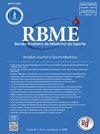不稳定性训练对足球学生体能的影响
4区 医学
Q4 Health Professions
Revista Brasileira de Medicina do Esporte
Pub Date : 2023-03-30
DOI:10.1590/1517-8692202329012023_0035
引用次数: 0
摘要
摘要:大多数协调性研究都是在稳定的环境中进行的,无法真实地模拟运动场上不可或缺的环境。不稳定性训练的概念运用运动生理学原理,结合足球比赛的实际情况来提高学生的运动能力,虽然还缺乏科学依据,但已经引起教练员的重视。目的:研究不稳定性训练的概念,评价不稳定性训练对足球学生运动协调性的优化和发展效果。方法:选择50名大学生足球运动员。学生随机分为实验组和对照组,差异无统计学意义。实验每天1小时,每周3次,共6周。对照组继续常规训练,实验组增加不稳定性训练方案。平衡测试结果收集前、后下肢支持和综合后外侧评分。活动表现的变化也通过干预前后收集的结果进行分析。结果:无支持组得分由101.14±8.22分提高至108.73±8.54分,高于对照组的103.8±58.11分。实验组综合评分为88.85±6.10 ~ 99.85+8.87,均高于对照组(88.15±6.43)。结论:不稳定性训练对足球学生运动协调性的优化和发展效果优于常规训练,将不稳定性训练引入日常训练中可以更有效地提高学生的身体健康水平。证据等级II;治疗性研究:治疗结果的调查。本文章由计算机程序翻译,如有差异,请以英文原文为准。
IMPACTS OF INSTABILITY TRAINING ON THE PHYSICAL FITNESS OF SOCCER STUDENTS
ABSTRACT Introduction: Most coordination studies are conducted in stable environments, unable to realistically simulate an environment integral to the sports field. The concept of instability training applies the principles of sports physiology, combining real situations from the soccer game to improve students’ sporting ability, and has gained attention from coaches, although it still lacks scientific evidence. Objective: Study the concept of instability training by evaluating its optimization and development effects on soccer students’ motor coordination. Methods: Fifty college soccer students were selected. The students were randomly divided into experimental and control groups, without relevant statistical differences. The experiment lasted one hour daily, three times a week, for six weeks. The control group remained with the usual training while the experimental group had the instability training protocol added. Balance test results were collected with frontal and posterior lower limb support and comprehensive posterolateral scores. Changes in activity performance were also analyzed with the results collected before and after the intervention. Results: The score of the experimental group without support was increased from 101.14 ± 8.22 to 108.73 ± 8.54, higher than the control group (103.8 ± 58.11). The comprehensive score of the experimental group was from 88.85 ± 6.10 to 99.85+8.87, also higher than the control group (88.15 ± 6.43). Conclusion: The effects of instability training to optimize and develop motor coordination in soccer students proved to be superior to usual training, and its introduction into daily training is indicated for more effective promotion of students’ fitness level. Level of evidence II; Therapeutic studies: investigation of treatment outcomes.
求助全文
通过发布文献求助,成功后即可免费获取论文全文。
去求助
来源期刊

Revista Brasileira de Medicina do Esporte
PHYSIOLOGY-SPORT SCIENCES
自引率
0.00%
发文量
204
审稿时长
6-12 weeks
期刊介绍:
The Revista Brasileira de Medicina do Esporte (RBME in its Portuguese form) is an official organ of the Sociedade Brasileira de Medicina do Exercício e do Esporte (SBME) Brazilian Society of Exercise Medicine and Sports) and represents the main promotion resource of the scientific production in the Exercise Sciences and Sports Medicine (SBME) fields in our country. The RBME was launched in 1995 with trimester periodicity and became regularly bi-monthly published with no interruptions from 1999.
RBME is an inter-and multidisciplinary, peer reviewed, Open Access journal which accepts contributions from the national and international scientific community. RBME publishes original articles of high scientific relevance in Exercise and Sports Medicine, review articles, and systematic reviews.
RBME preferably publishes original articles of international interest, not only of regional significance. Its goal is to disseminate the scientific production in the areas of exercise and sports medicine through the publication of original research results and other documents that contribute to the scientific and applied knowlewdge of physical activity, exercise and sports, within the framework of biological sciences and medicina.
Its title abbreviation is Rev Bras Med Esporte, which should be used in references, footnotes and reference subtitles.
 求助内容:
求助内容: 应助结果提醒方式:
应助结果提醒方式:


